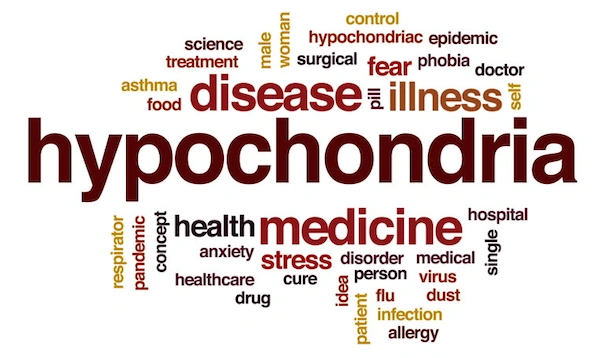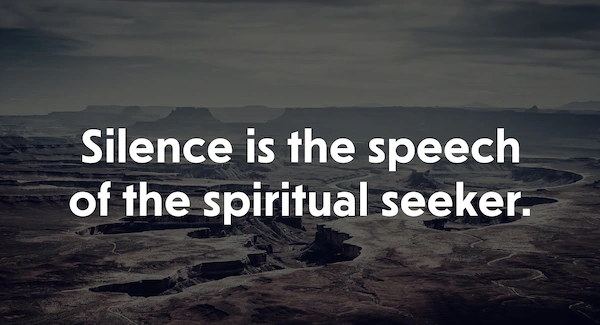
In the landscape of human suffering, few conditions illuminate the complex interplay between body and spirit as profoundly as hypochondria. Far beyond a simple preoccupation with physical symptoms, this phenomenon opens a window into the deeper chambers of human existence—revealing how our relationship with mortality, meaning, and transcendence shapes our lived experience. This exploration invites us to move beyond clinical categorizations to understand hypochondria as a metaphysical condition—one that speaks to our fundamental anxieties about being and non-being in a world of impermanence.
The Existential Paradox of Hypochondria
Hypochondria—or health anxiety as it’s now commonly termed—presents a fascinating paradox. Those afflicted find themselves trapped in a state of heightened awareness of their physical vulnerability, yet this very awareness often disconnects them from authentic living. This condition reveals not merely a fear of illness but a profound confrontation with human finitude itself.
The Ontological Fear Beneath Physical Symptoms
What appears on the surface as concern about physical ailments often conceals a deeper ontological dread—a fear not just of disease but of extinction. The hypochondriac’s vigilance can be understood as a spiritual crisis manifesting in physical preoccupation. Their obsessive attention to bodily sensations represents an attempt to control the uncontrollable and know the unknowable—the mystery of our transient existence.
This vigilance takes form in the constant scanning of bodily sensations, researching diseases, and seeking reassurance from medical professionals. Yet such temporary relief inevitably gives way to renewed anxiety, for the underlying existential question remains unanswered: How do we reconcile ourselves to our inherent vulnerability as finite beings?
Philosopher Søren Kierkegaard might recognize in hypochondria what he called “the sickness unto death”—not a physical malady but a spiritual condition characterized by despair. This despair stems from failing to properly relate to the self as a synthesis of the finite and infinite, the temporal and eternal. The hypochondriac, overwhelmed by the finite dimension of existence (the body’s vulnerability), loses sight of their infinite potential for transcendence.
Mortality Awareness as Spiritual Awakening
Paradoxically, this confrontation with mortality holds the potential for profound spiritual awakening. Many wisdom traditions suggest that authentic spiritual life begins precisely with the honest acknowledgment of death’s inevitability. The Buddhist practice of maraṇasati (mindfulness of death) invites practitioners to contemplate their mortality not to induce fear but to inspire mindful living.
For the person struggling with health anxiety, this perspective offers a radical reframing: What if these fears, rather than being purely pathological, represent an intuitive recognition of life’s precious fragility? What if the hypochondriac’s heightened awareness of mortality, when channeled consciously, could become a gateway to a more authentic spiritual life?
The Spiritual Roots of Health Anxiety
To understand hypochondria through a spiritual lens requires examining the metaphysical foundations upon which our relationship with the body is constructed.
The Soul’s Vulnerability in Material Existence
From numerous spiritual perspectives, embodiment itself represents a kind of vulnerability—the infinite soul constrained within finite flesh. This condition creates an inherent tension that all humans must navigate, but which becomes particularly acute for those with hypochondriacal tendencies.
Eastern traditions like Vedanta speak of the five koshas or “sheaths” that encapsulate consciousness—from the grossest physical body to the subtlest spiritual body. Health anxiety might be understood as an imbalanced focus on the annamaya kosha (physical sheath) at the expense of the more subtle dimensions of being. The preoccupation with physical symptoms reflects a soul that has temporarily forgotten its more expansive nature.
Similarly, in Platonic thought, the body is viewed as the prison of the soul—a necessary but limiting vessel for spiritual experience in the material world. The hypochondriac’s suffering might represent an intuitive resistance to this imprisonment, a soul straining against the limitations of physical existence without yet discovering the transcendent perspective that would provide liberation.
Disruption of the Sacred Body-Spirit Relationship
Many spiritual traditions emphasize the sacredness of the body as a temple or vessel for divine expression. In this framework, hypochondria can be understood as a disruption in one’s relationship with this sacred vessel—a loss of trust in the body’s inherent wisdom and self-regulating capacities.
The Jewish concept of pikuach nefesh (saving a life) places such high value on physical well-being that it supersedes almost all other religious obligations. Yet this tradition also teaches that excessive anxiety about health can become a form of spiritual imbalance. The medieval Jewish philosopher Maimonides, himself a physician, advocated for a middle path—respecting the body’s needs while maintaining focus on spiritual development.
In Christian theology, the incarnation of Christ represents the ultimate sanctification of physical existence—divine spirit fully embracing human flesh with all its vulnerability. From this perspective, reconciliation with one’s bodily existence becomes not just a psychological imperative but a spiritual practice reflecting the divine embrace of human vulnerability.
The Metaphysical Distortions of Perception in Hypochondria
Health anxiety often involves specific distortions in how one perceives and interprets reality—distortions that have profound metaphysical implications.
Hypervigilance as Disrupted Presence
The hypochondriac’s hypervigilance—their heightened attention to bodily sensations—represents a disruption in what spiritual traditions might call “presence” or “mindfulness.” This state of hyperawareness paradoxically removes them from direct experience, as physical sensations are immediately interpreted through the lens of potential illness rather than experienced as they are.
This disruption in presence reflects a metaphysical misalignment. As philosopher Martin Heidegger might observe, the hypochondriac’s mode of being-in-the-world shifts from one of engaged participation to detached observation. The body is no longer lived through transparently but becomes an object of scrutiny and suspicion—what phenomenologists would call a transition from “body-as-subject” to “body-as-object.”
Temporal Distortion: Living in Anticipatory Fear
Health anxiety fundamentally alters one’s experience of time, creating what existential philosophers might call “inauthentic temporality.” Rather than dwelling in the present moment, the hypochondriac lives in anticipatory dread—constantly projecting consciousness forward to imagined future scenarios of illness and suffering.
This temporal distortion has spiritual significance. Many wisdom traditions emphasize the present moment as the only point of contact with the eternal or divine. As Meister Eckhart wrote, “Time is what keeps the light from reaching us. There is no greater obstacle to God than time.” The hypochondriac’s fixation on future possibilities of illness creates exactly this obstacle, blocking access to the transcendent dimension available only in the present.
Near-Death Experiences: The Transformative Paradox
One of the most compelling spiritual dimensions of health anxiety involves its relationship to near-death experiences (NDEs). These profound events often radically transform an individual’s relationship with mortality.
The Reversal of Fear Through Transcendent Experience
What most terrifies the hypochondriac—death—paradoxically becomes a source of peace and understanding for those who have glimpsed beyond the veil through NDEs. Numerous accounts from individuals who have undergone such experiences report a dramatic reduction in death anxiety and a heightened sense of spiritual connection.
Dr. Raymond Moody, who coined the term “near-death experience,” documented how these events frequently lead to a diminished fear of death, increased appreciation for life, and a sense of purpose that transcends physical existence. For many experiencers, the encounter with what they perceive as a transcendent reality fundamentally alters their relationship with their physical being.
This transformation suggests a profound spiritual insight: perhaps what heals the hypochondriac’s suffering is not more vigilant attention to the body but a glimpse of what lies beyond it—an experience of identity that transcends physical boundaries. As the 13th-century Sufi poet Rumi wrote: “You are not a drop in the ocean. You are the entire ocean in a drop.”
Religious and Philosophical Perspectives on Health Anxiety
Different spiritual traditions offer unique frameworks for understanding and addressing the suffering of health anxiety.
Christian Perspectives: The Tension of Faith and Surrender
Christianity addresses health anxiety through multiple theological dimensions. The incarnation affirms the goodness of embodied existence, while Christ’s healing ministry emphasizes God’s concern for physical well-being. Yet Christian spirituality also emphasizes surrender to divine providence—a willingness to accept suffering when it cannot be avoided.
The apostle Paul’s “thorn in the flesh” (2 Corinthians 12:7-9) offers a powerful paradigm for those struggling with chronic health concerns. Though Paul repeatedly prayed for healing, he ultimately found spiritual meaning in his ongoing affliction: “My grace is sufficient for you, for my power is made perfect in weakness.” This perspective suggests that physical vulnerability, rather than being an obstacle to spiritual life, can become its very foundation.
For those with health anxiety, the Christian invitation to “cast all your anxiety on him because he cares for you” (1 Peter 5:7) offers a practice of surrendering health concerns to divine care. This is not passive resignation but active trust—a recognition that ultimate control over bodily existence lies beyond human power.
Buddhist Insights: Impermanence and Non-Attachment
Buddhism offers particularly relevant insights for understanding health anxiety through its central teachings on impermanence (anicca) and suffering (dukkha). From a Buddhist perspective, the hypochondriac’s suffering stems from an attempt to establish permanence and control in a reality characterized by continuous change.
The Four Noble Truths provide a framework for addressing this suffering: acknowledging suffering’s existence, understanding its causes (attachment and craving for certainty), recognizing the possibility of liberation, and following the path that leads to freedom from suffering.
For those with health anxiety, Buddhist practices of mindfulness meditation offer a powerful method for developing a different relationship with bodily sensations and anxious thoughts. By observing physical sensations with equanimity rather than reactivity, practitioners can develop what Buddhists call “bare attention”—the ability to experience bodily states without elaborating narratives of catastrophe around them.
Hindu Perspectives: Karma and the Subtle Body
Hindu philosophy offers rich conceptual resources for understanding health anxiety through its sophisticated models of consciousness and the subtle body. The system of chakras—energy centers corresponding to different aspects of physical and psychological functioning—provides a framework for understanding how emotional and spiritual imbalances manifest as physical symptoms.
From this perspective, excessive health anxiety might indicate blockages in specific energy centers, particularly the root chakra (muladhara) associated with basic security and survival, or the solar plexus chakra (manipura) connected to personal power and control.
The Hindu concept of karma also offers a framework for understanding suffering not as random misfortune but as part of a larger pattern of spiritual development across multiple lifetimes. This perspective can help transform the meaning of physical suffering from meaningless affliction to opportunity for spiritual growth and the working out of karmic patterns.
Spiritual Practices for Transforming Health Anxiety
Beyond theoretical frameworks, various spiritual traditions offer concrete practices for transforming one’s relationship with health concerns.
Meditation: From Hypervigilance to Mindful Awareness
Meditation practices from diverse traditions offer powerful tools for addressing the perceptual distortions of health anxiety. Rather than attempting to eliminate bodily sensations or anxious thoughts, meditation cultivates the capacity to observe them with equanimity.
Vipassana meditation, with its focus on non-judgmental awareness of bodily sensations, can be particularly beneficial. By systematically observing sensations throughout the body without reacting to them, practitioners develop what Buddhist psychology calls “equanimity” (upekkha)—the ability to be with pleasant or unpleasant experiences without being overwhelmed by them.
Over time, this practice can transform the hypochondriac’s relationship with bodily sensations from one of fearful vigilance to curious acceptance. The body is no longer experienced as a threat but as a field of constantly changing sensations—some pleasant, some unpleasant, all impermanent.
Contemplative Prayer: Surrendering Health Concerns
For those in theistic traditions, contemplative prayer practices offer a way to address health anxiety through relationship with the divine. The ancient practice of “centering prayer,” developed in the Christian contemplative tradition, cultivates a state of receptive silence in which anxious thoughts about health can be gently released into divine care.
Similarly, the Jewish practice of hitbodedut—spontaneous, personal conversation with God—provides a framework for expressing health fears while simultaneously placing them in a larger context of divine providence. By articulating fears while maintaining awareness of God’s presence, practitioners can experience what Martin Buber called the “I-Thou” relationship—a direct encounter with divine presence that transcends instrumental concerns.
Embodiment Practices: Reclaiming the Lived Body
Various somatic practices offer ways to transform one’s relationship with embodiment from fearful vigilance to appreciative presence. Practices like yoga, tai chi, and qigong cultivate what phenomenologists call the “lived body” (as opposed to the “objective body” that is the focus of medical examination).
These disciplines help practitioners experience the body not primarily as a potential source of pathology but as a vehicle for spiritual experience and expression. Through mindful movement, conscious breathing, and energy awareness, these practices can gradually shift attention from fearful monitoring of symptoms to appreciative participation in embodied existence.
The Transformative Potential of Health Anxiety
Perhaps the most profound spiritual perspective on hypochondria is one that recognizes its potential as a catalyst for transformation. What begins as suffering can become, through conscious engagement, a path to deeper wisdom.
From Symptom Vigilance to Existential Awakening
The hypochondriac’s heightened awareness of bodily vulnerability can, when appropriately channeled, become a gateway to existential awakening. By facing rather than fleeing from awareness of mortality, individuals can discover what existential philosophers call “authentic existence”—a life lived with conscious acceptance of its finite nature.
This transformation involves a fundamental shift in attention—from anxious monitoring of symptoms to curious exploration of what it means to be an embodied, finite being capable of transcendent experience. The question shifts from “What might be wrong with my body?” to “What does this vulnerability teach me about the nature of existence itself?”
Embracing Vulnerability as Spiritual Practice
Ultimately, spiritual wisdom regarding health anxiety converges on a paradoxical insight: the healing path involves not the elimination of vulnerability but its conscious embrace. As Brené Brown’s research on vulnerability suggests, those who acknowledge rather than deny their vulnerable nature often discover unexpected strength, connection, and resilience.
For the person struggling with health anxiety, this might mean practicing what Buddhist teacher Pema Chödrön calls “leaning into the sharp points”—turning toward rather than away from uncomfortable sensations and fears. This practice doesn’t eliminate suffering, but it transforms one’s relationship with it from adversarial to instructive.
Conclusion: Toward a Holistic Understanding
Viewing hypochondria through a spiritual lens reveals its complex nature as both suffering and opportunity. What appears clinically as a disorder of perception may also represent an intuitive recognition of existential truths that our culture often denies—the reality of human vulnerability, the inevitability of suffering, and the mystery of mortality.
A truly holistic approach to health anxiety honors both its painful reality and its potential wisdom. It acknowledges the genuine suffering involved while recognizing that this very suffering, when engaged with spiritual awareness, can become a catalyst for profound transformation. The hypochondriac’s journey may ultimately lead not just to symptom management but to a deeper reconciliation with the fundamental conditions of human existence—embodiment, vulnerability, and the ever-present possibility of transcendence within immanence.
In this light, hypochondria becomes not merely a condition to overcome but a difficult teacher offering lessons in what it means to be fully human—finite yet connected to the infinite, vulnerable yet capable of remarkable resilience, embodied yet transcending the merely physical. The path forward lies not in denying these paradoxes but in embracing them as the very ground of authentic spiritual life.
ARE YOU A HYPOCHONDRIAC?
Read the following sentences and choose the ones that best describe your way of being.
Count the total number of selected boxes and check the related profile.
0-1: You are not a hypochondriac at all
2-3: You show some mild signs of hypochondria
4-5: You show a strong hypochondriac tendency
6: You are most likely affected by hypochondria
Further details and being hypochondriac





